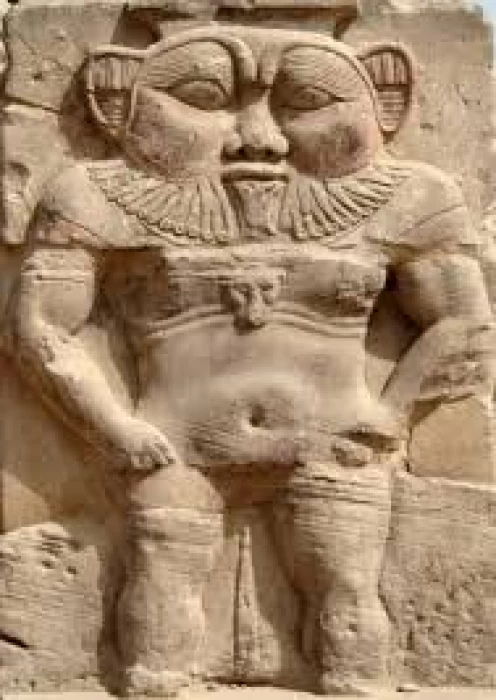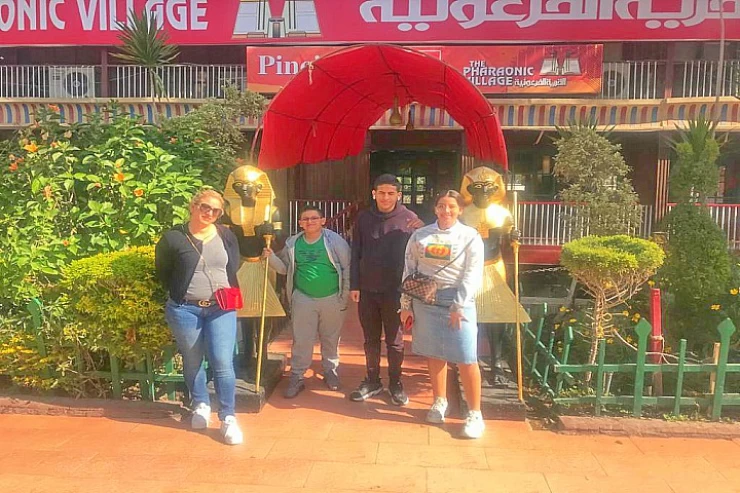
God Bes | God of Childbirth | Ancient Egyptian Dwarf God
The God of Childbirth
Egyptian art, which is basically hieratic, adheres to ancestral standards that control drawing and all matters pertaining to the scriptures in order to support beliefs and rituals. Despite the weight of these conventions, Egyptian artists have managed to take advantage of these laws to represent the gods, goddesses and symbols of their mythology with great creativity.
In Egyptian iconography, the gods are generally depicted in a side image. Only one of them escapes this rule: the god Bes. He is almost always depicted from the front, in the form of a dwarf with bowed legs, long arms, and a stocky body. His head is crowned with an impressive crown of ostrich feathers.
Although his appearance may not be very appealing, Bes was a benevolent deity, mainly worshipped as part of the domestic cult, and very popular in ancient Egypt. His grotesquely grimacing face gives him a frightening appearance, intended to ward off evil spirits. Images of the god, like this amulet, thus have an apotropaic function.
He is sometimes depicted with musical instruments, whose sound, accompanied by dancing, wards off negative influences and brings joy and good cheer into the home. He watches over Egyptians in their daily lives, but also during their sleep, a period when they are more vulnerable to evil spirits. It also protects pregnant women during pregnancy and childbirth, alongside the goddess of maternity, Hathor. Currently, the only known temple dedicated to Bes is located in the oasis of Bahariya.
God Bes, is the only divinity represented exclusively in frontal perspective, it belonged to one of the minor deities in ancient Egypt most admirable to the popular imagination of the ancient Egyptians.
Bes, a divinity with demonic characteristics, is strangely a family divinity. Bes was a protector of the home and children, particularly linked to the critical phase of birth and the defense against harmful animals. This aspect was probably the most ancient. The natural sphere of action of the god Bes spread his image on a wide range of objects of the daily life of the ancient Egyptians from the headrests, in which he watched over the sleep of the helpless sleepers, to the personal care objects.
Bes's relations with dance and music were also very close, with which he relieved the angry goddesses. Connections with the solar cycle indicate it as a popular form of the solar god.
Bes is an ancient Egyptian fairy god, a composite being, both deity and satanic warrior. He was a god of war, but also a protector of childbirth and the home, and was associated with desire, entertainment, music, and dancing. Although his role originally appears to have been the pharaoh's guard, he increasingly became very famous among common people because he essentially protected women and children. He had no certain cult, so no temples or priests were established in his name. However, he was one of the most familiar of ancient Egyptians and was usually represented on household items.
The god "Bes" reflects an aspect of the ancient Egyptians' interest in fun and humor as a means of entertaining themselves in their daily lives, which were full of hard work and hardship.
The god "Bes" is the ancient Egyptian god of humor and fun. The ancient Egyptians chose for this god, humor, a form that provoked laughter and ridicule, as they formed him as a small dwarf with a full face and muscles, with his tongue sticking out of his mouth, combining the form of a human and a monkey, and his role was to bring joy to the king and the entourage in the royal councils
He only provided protection from danger, while at the same time warding off harm, and was able by his power to prevent evil according to the beliefs of the ancient Egyptians.
In critical circumstances he also appeased nature as told in the famous solar eye legend, when he stopped the wrath of the bloodthirsty goddess Hathor and offered her an alcoholic drink, with a plant-based drug added.
In a more specific field, it brought joy and had a certain regenerative importance that contributed to the achievement and happiness of family life in all aspects of procreation, from masculinity through fertility, to birth and growth. Protecting life and family also includes the healing powers of God only, both in terms of medical healing and magical purification.
The cult of Bes and the rituals surrounding its complex spiritual nature centered on different categories of ritual objects, maintaining certain stereotypical features with stylistic changes over several centuries.
Among these things, so-called vases played a major role. These vases are a class of ceramic vessels decorated with a doll or head, which spread in Egypt from the New Kingdom (16th to 11th centuries BC) to the Hellenistic or Ptolemaic era (330-30 BC) and the periods of the Roman Empire (30 BC). BC – 476 AD), when production peaked.















